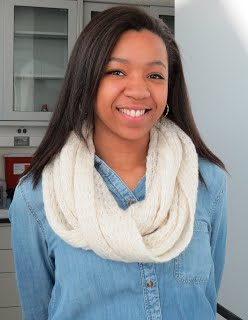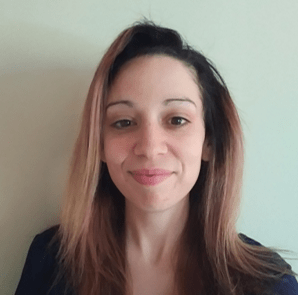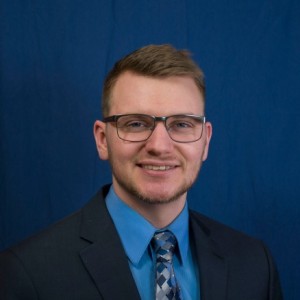Written by Niara Nichols and Lauren Gandy
Our most senior writers – located in Albany, NY, Morgantown, WV and Washington DC – joined the ForensicBites team in 2019. As authors, they dedicated their after-work and post-studies hours to reading technical articles within their field and contextualizing the results for everyone to understand. Their passion and academic excellence shines through their work, both at ForeniscBites and beyond. For National Forensic Science Week, we asked them how they feel about the future of forensics, their experiences in the lab and what inspired them to pursue a forensics career.

Jalissa Thomas, master’s student of chemistry at the University of Albany, studies the application of Raman spectroscopy to forensic samples. During her undergraduate career, Jalissa taught chemistry labs alongside graduate teaching assistants and tutored middle and high school students while performing research for three years. She is also very active in the Eastern New York Younger Chemists Committee and just completed an internship with the New York State Police Forensic Services. Jalissa writes on the intersection of forensics and chemistry, including chemical warfare agents, ignitable liquids and illicit drug manufacturing.
Q: What do you think is the most exciting thing about the field of forensic science currently?
A: I would say the upcoming research. With technology, crime solving, and crime are definitely changing. At a conference I attended this past March, they talked about how analysts are changing their analysis in order to adapt to 3D printed guns. It is interesting to see the field adapt to all these new technologies.
Q: What is your favorite technique to use in the lab?

A: Gas chromatography/mass spectroscopy (GC/MS), since I have a lot of experience with it. GC/MS can sometimes be tricky but the concepts behind it are understandable and you are usually workshop any issues. This technique is also very versatile. You can use it for drug chemistry, trace evidence, fire debris, and environmental pollution.

Catherine Allen currently studies at George Washington University as a master’s student of Forensic Molecular Biology. Before joining the program and switching to forensics, she obtained her bachelors in genetics with a minor in criminology at Rutgers University and worked for quality control and medical diagnostics companies. She researches the application of SNPs to complement current STR-based genetic typing in Dr. Daniele Podini’s lab. Catherine has written on topics including massively parallel sequencing, the genetics of freckles and genotype-to-phenotype methods.
Q: You’ve previously worked at a law firm and medical diagnostic company, so after graduating with your master’s degree, what do you want to do?
A: Working where I work now, we do a lot of quality control and quality assurance. That opens a lot more doors because quality control is huge in forensics…I actually applied to the DPAA [Defense POW/MIA Accounting Agency] in Hawaii. They’re working on identification of soldiers from the Korean War. They had a quality assurance job that I got – and I had to reject because I had one year of school left, and they needed me right away, so that was a bummer. So I don’t have to go into a crime lab, there’s a lot of options, but I definitely want to do benchwork.
Q: Tell me about your research.
A: Everything in [forensic DNA] is STR based, like CODIS. But now people are looking at SNPs (single nucleotide polymorphism) because SNPs are better when looking at degraded and older DNA. But this thing is you need to have a lot more to equal out [statistically] with STRs. So I look at rare SNPs and how that affects your interpretations with mixtures and ancestry…We’re taking the individual, identifying their SNPs and then tracing back how rare that SNP is in the population. The [Podini] lab has published some on microhaplotypes, which have multiple SNPs on them – like if you have one microhaplotype, that has 4 SNPs on them.
Q. How long do you think it will take to has this research translate to the field?
A. I interned at a lab where they were working validating SNP methods for casework. They don’t think that SNPs will take over for STRs, but instead SNPs work to complement STR analysis since it’s more difficult to interpret because it’s bialleleic.


Niara Nichols loved science, math and writing from an early age but fell headfirst into forensics in high school. Now, she’s completing her undergraduate degree in forensic chemistry at SUNY Albany and researching with Dr. Igor Lednev, renowned Raman spectroscopist. Niara previously researched at the Mt. Sinai School of Medicine and completed internships at two crime labs. After graduating in Dec 2021, Niara aims to obtain her doctorate in chemistry and focus on drug chemistry or toxicology. Niara has written on those topics, along with blowfly and hemoglobin-based methods for post-mortem interval determination and removing chemical interferants for hair analysis.
Q: What do you enjoy most and least about your research?

like that in Niara’s research
Source: DTU Chemistry
A: I personally think that the Raman [laser] itself is pretty cool. I think developing a novel method and seeing all the parts that go into making the method and all the people working together. Like someone looks at this model and thinks, “oh, but how will this be affected by a man or a woman, or by race or age” and putting together all these pieces of the puzzle to create one method…[on the flip side] it’s really annoying that things go wrong all the time. It’s just life in general but also science, and it can be frustrating. Especially since as an undergrad, I’m not an expert or have a large amount of experience when something goes wrong…[troubleshooting] is not as easy of a process as you think it is and a lot of times you kind of have to muddle through it.
Q: As an undergrad in a course-heavy curriculum, what have been your favorite classes?
A: I definitely enjoyed Intro to Forensic Chemistry and the lab. I thought the class was interesting because we got a little bit of everything. It was the first time I actually sat down and had a proper forensics class. And I really fell in love with the lab in particular because I had read up about all these different techniques before, but was now actually performing them. Like I would do fingerprints with the powders at camp [Niara attended several forensics camps at local universities while in high school] but not actually use the chemical methods. And then using the chemical color tests that they use in the field for drugs…especially since a lot of times it was framed like a mock case.

William Feeney completes his doctorate in forensic chemistry this upcoming May. While he chooses between a fellowship-funded postdoc at a national lab or going straight into forensics industry, he hones his science communication skills at ForensicBites. William’s interest lie in gunshot residue, his dissertation topic, and improved explosive devices.
Q: What do you enjoy most about forensic science?
A: I like how there are multiple ways to solve a problem and people with varying backgrounds can apply their knowledge base to solve the same problem. Even outside of the chemistry field, you have practitioners looking at latent figure prints, gunshot residue, trace evidence, etc. Forensic science as a whole is growing rapidly because everyone’s unique role plays a part in the bigger picture.
Q: Were you always interested in forensic science, or did you have a pivotal event that intrigued you?

look into forensics as a career.
A: Yes, as a freshman in college I was more geared towards forensics. You hear a lot about the CSI effect, but for me it was the NCSI effect. I watched a lot of NCIS with my mom growing up. My uncle was a chemistry and physics teacher and later on opened my eyes to the chemistry aspect of forensics, so I picked up that major going into my sophomore year. Now I get the best of both worlds with the chemistry and the forensics.
